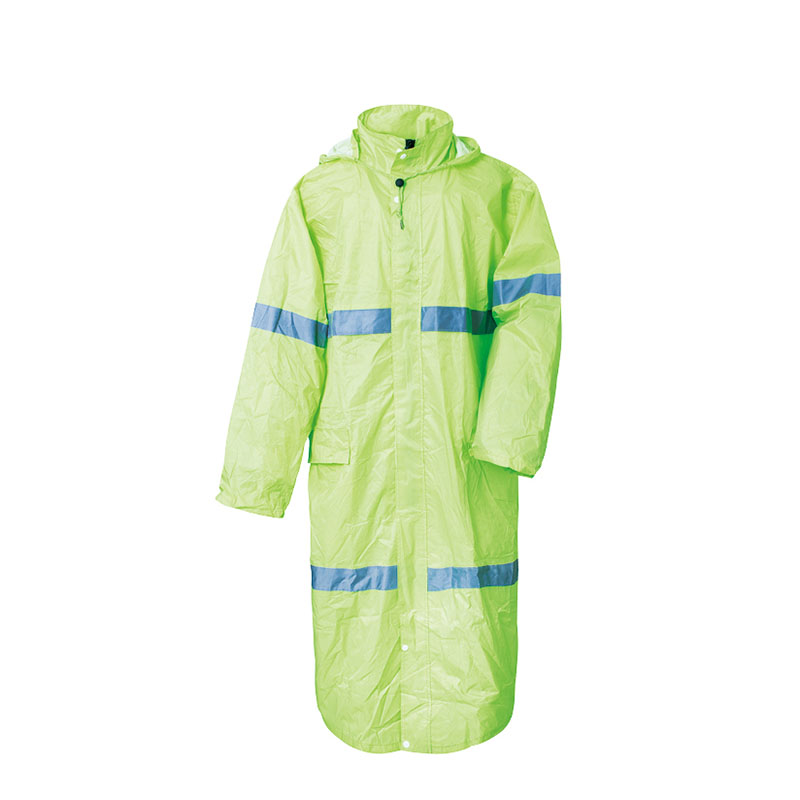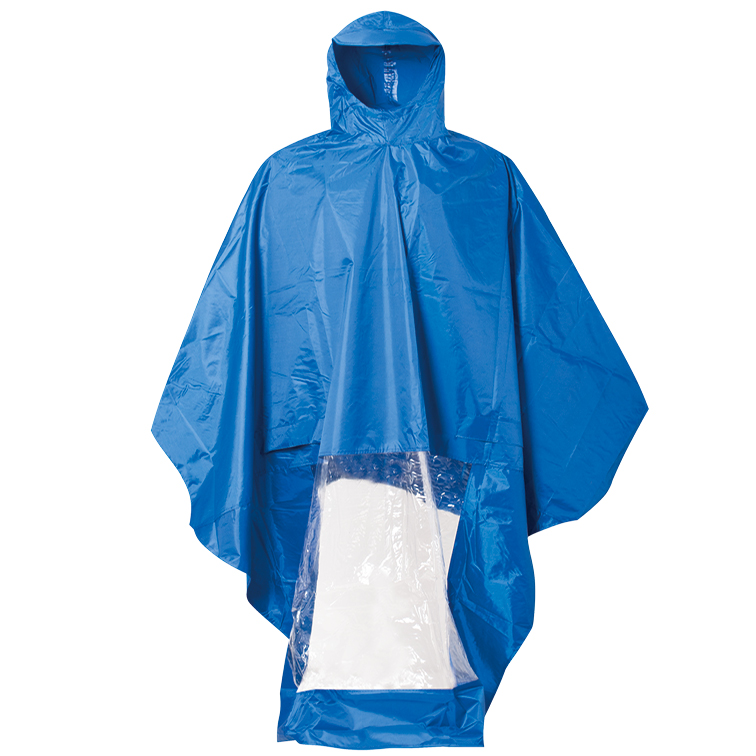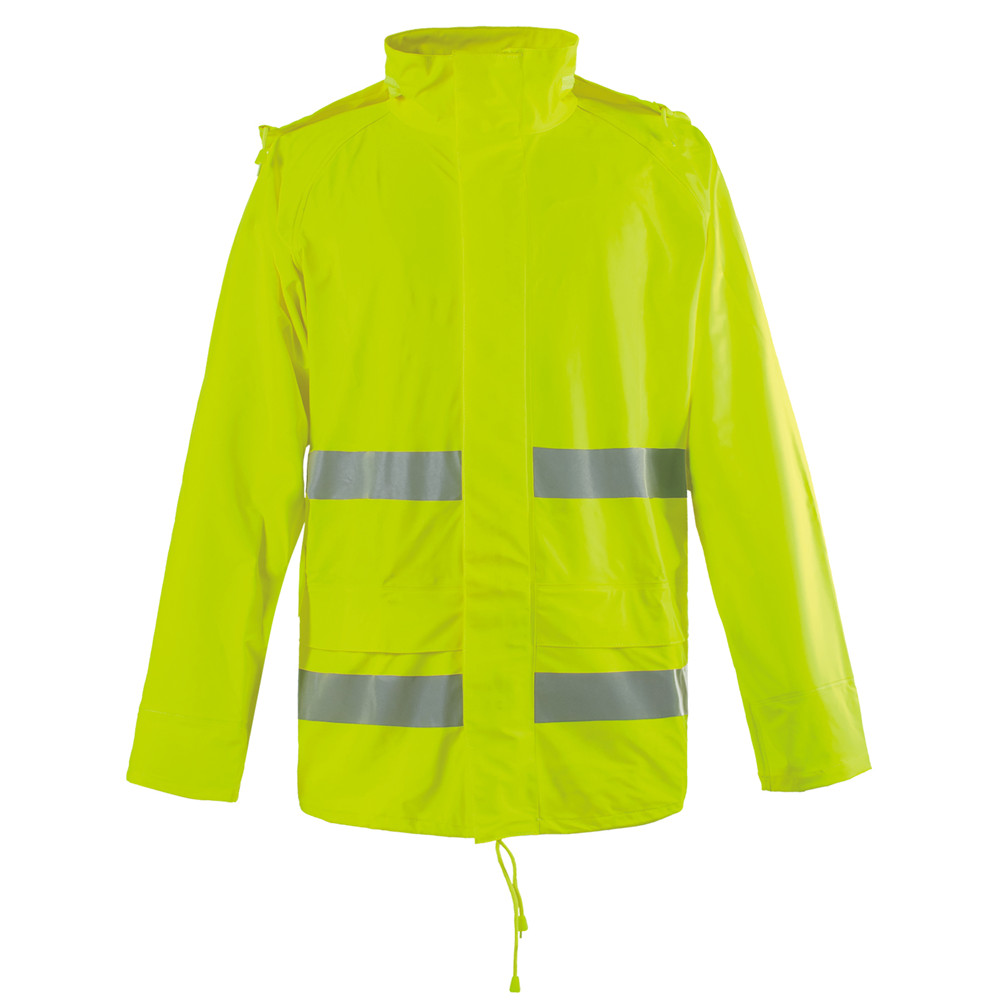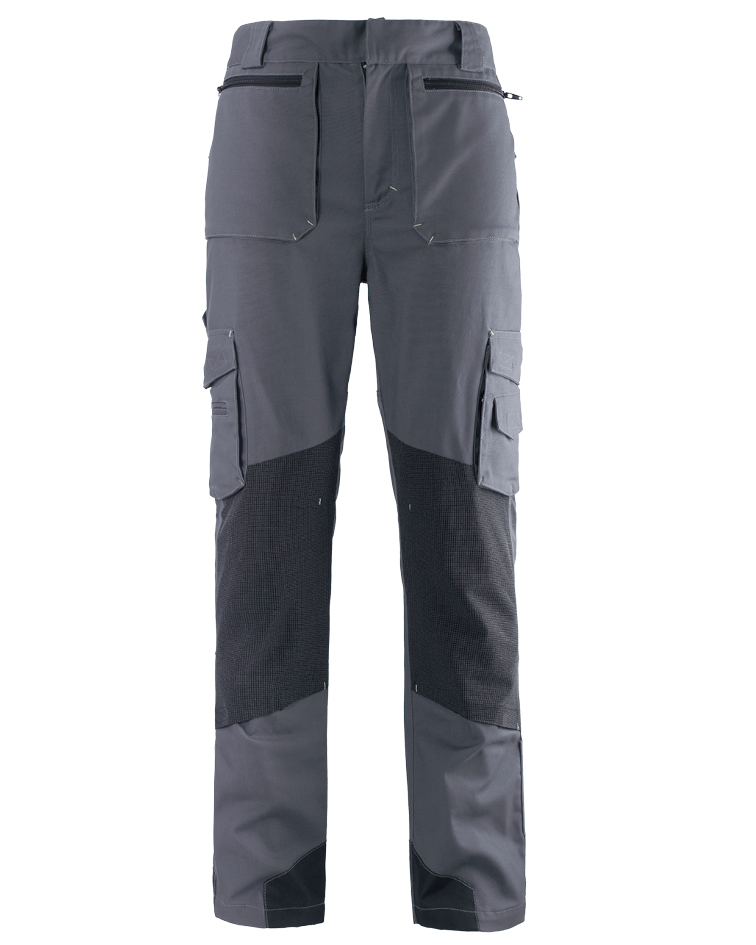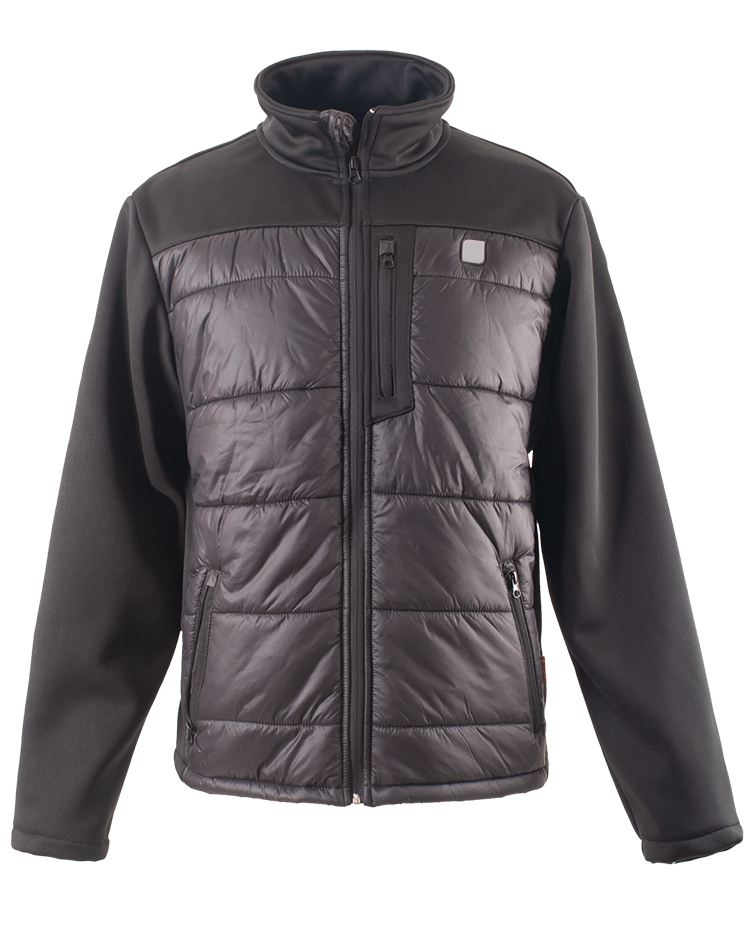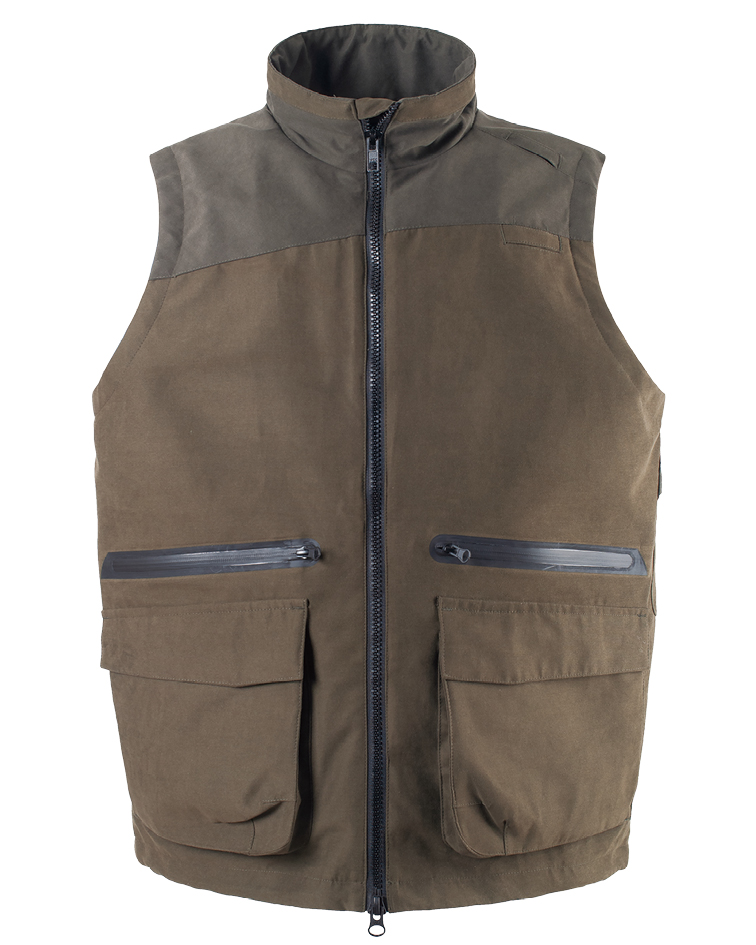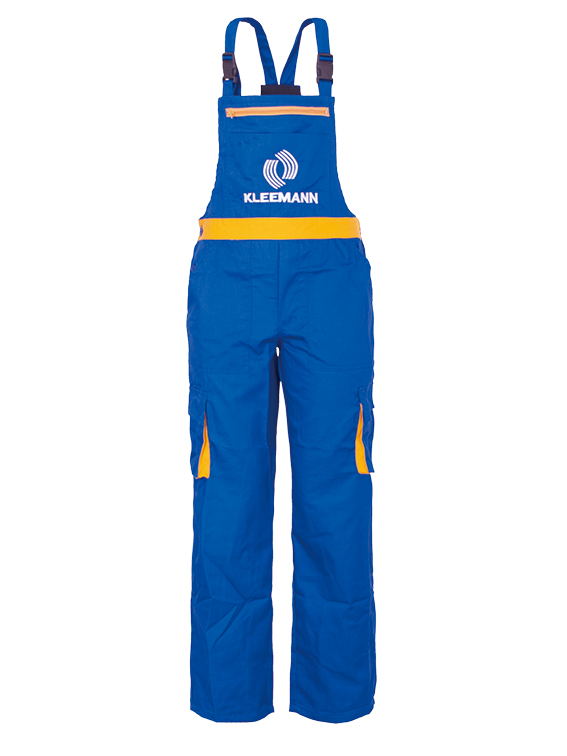Dear customers and friends:
In demanding industrial environments, ensuring worker safety is paramount. This necessitates robust personal protective equipment (PPE), with high visibility clothing being a critical component. Designed to make wearers conspicuous in low-light conditions, inclement weather, or complex operational zones, these garments are essential across a multitude of sectors where visibility hazards are prevalent. From petrochemical complexes to metropolitan construction sites, the efficacy of such gear directly impacts accident prevention and operational efficiency.
Industry Trends in High Visibility Solutions
The market for advanced high visibility solutions is experiencing significant evolution, driven by stricter regulatory frameworks and technological advancements. A key trend is the integration of smart textiles and enhanced luminescent technologies. For instance, micro-prismatic retroreflective materials are increasingly replacing traditional glass bead technology, offering superior reflectivity and wider angularity, ensuring visibility from more diverse viewpoints. Another emerging trend is the incorporation of LED technology into garments, providing active illumination in addition to passive reflection. This is particularly beneficial in extremely dark environments or during critical nighttime operations.
Furthermore, there's a growing demand for multi-functional high visibility clothing that offers protection against various hazards concurrently, such as flame resistance (FR), arc flash protection, chemical splash resistance, and thermal insulation, without compromising on wearer comfort or freedom of movement. Sustainable manufacturing practices are also gaining traction, with a focus on recycled materials and eco-friendly dyeing processes to reduce environmental impact. The adoption of specific high visibility colors, such as fluorescent yellow-green, fluorescent orange-red, and fluorescent red, is standardized to maximize contrast against most backgrounds, adhering to international norms like ANSI/ISEA 107 and EN ISO 20471.
Digitization in supply chain management and custom design tools further facilitates the provision of tailored solutions, allowing B2B clients to specify precise requirements for their workforce, from branding to specific material compositions suited for extreme climatic conditions or unique operational risks. This shift towards highly engineered and customized PPE is a testament to the industry's commitment to optimal worker safety and operational efficiency.
Manufacturing Process of High Visibility Clothing
The production of a HIGH VISIBILITY JACKET involves a meticulously engineered process to ensure compliance with stringent safety standards and robust performance. It begins with the selection of specialized materials: the primary fabric, typically a durable polyester or blended textile, is chosen for its fluorescent properties in specific high visibility colors. This base fabric undergoes a specialized dyeing process to achieve the required chromaticity and luminance factors according to standards such as EN ISO 20471 or ANSI/ISEA 107. These standards dictate precise color coordinates to ensure maximum daytime conspicuity.
Step 1: Material Sourcing & Preparation
Selection of durable, fluorescent base fabrics (e.g., 300D Oxford Polyester with PU coating) and certified retroreflective tapes. Fabrics often undergo pre-treatment for water resistance or flame retardancy.
Step 2: Precision Cutting
Automated CNC cutting machines are utilized to precisely cut fabric components and retroreflective segments according to predefined patterns, minimizing material waste and ensuring consistent sizing.
Step 3: Assembly & Stitching
Components are assembled by skilled technicians. Double-stitching and reinforced seams are employed for durability. Retroreflective tapes are strategically positioned and sewn on, adhering to specified garment configurations (e.g., Class 2 or Class 3 designs).
Step 4: Quality Control & Testing
Each garment undergoes rigorous inspection for stitching integrity, material flaws, and adherence to design specifications. Performance testing includes luminosity measurement, retroreflectivity verification, and assessments for colorfastness, tear strength, and water penetration.
Testing standards, such as ISO 20471:2013 and ANSI/ISEA 107-2020, are strictly adhered to throughout the process, ensuring the garments meet the required minimum areas of fluorescent and retroreflective materials. The typical service life for well-maintained high visibility clothing is generally 25-50 washes, depending on the material and care instructions. Target industries include petrochemical, metallurgy, water supply & drainage, construction, and transportation. Advantages demonstrated in typical application scenarios include significant energy saving through accident reduction, enhanced worker morale, and corrosion resistance for specialized models designed for harsh chemical environments.
Technical Specifications: HIGH VISIBILITY JACKET
The DELLEE HIGH VISIBILITY JACKET (FX model) represents a pinnacle of engineering designed for extreme industrial environments. Its construction focuses on achieving maximum worker conspicuity and protection.
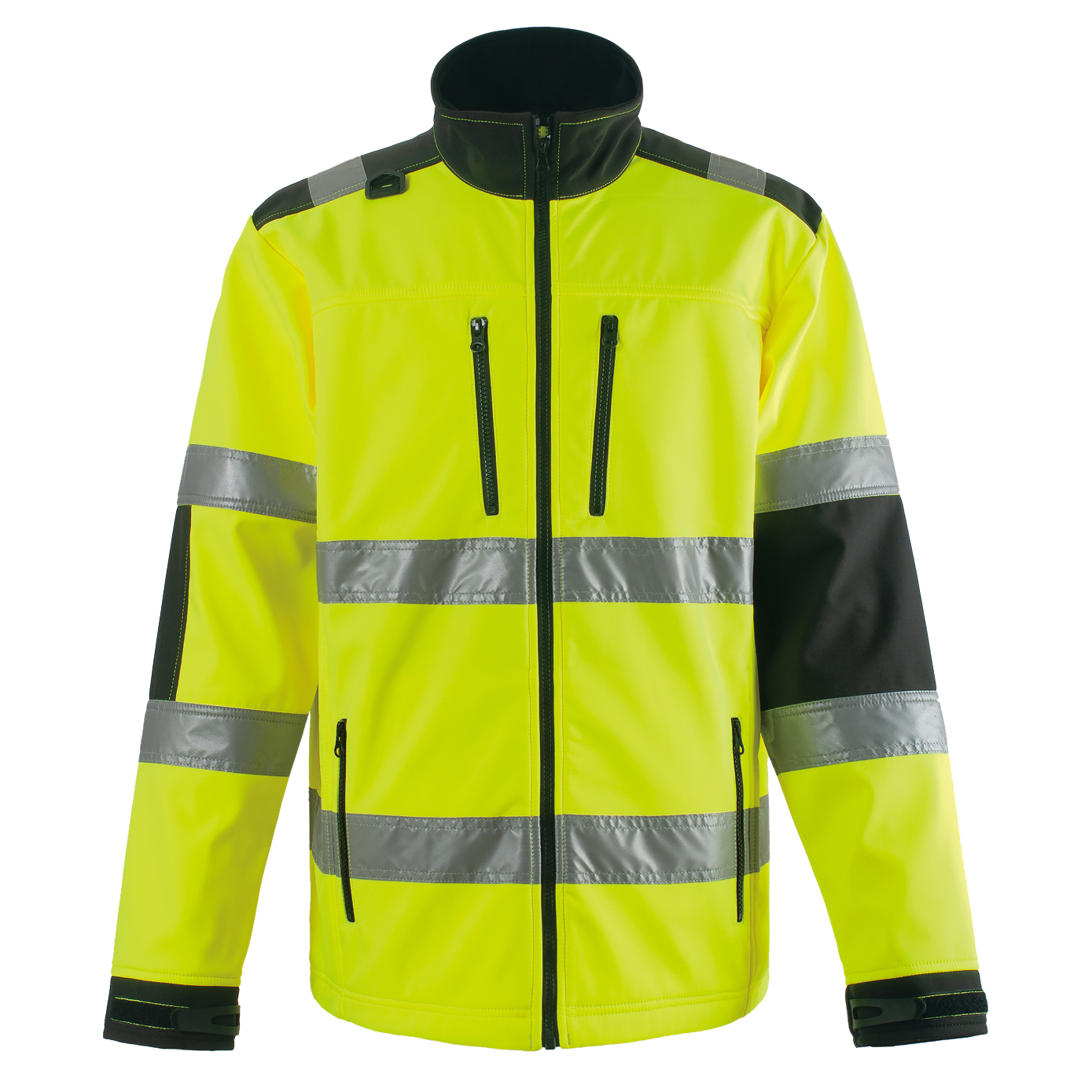
The robust design of this high visibility jacket ensures both compliance and durability. The PU coating on the Oxford polyester offers excellent water and wind resistance, making it suitable for outdoor use in adverse weather. The quilted padding provides thermal insulation, rated for cold protection under EN 342 standards, crucial for workers in cold storage, outdoor winter construction, or arctic exploration. The combination of fluorescent material and micro-prismatic reflective tape guarantees 360-degree conspicuity, significantly reducing the risk of accidents in complex operational environments. This comprehensive approach to design and material selection highlights the jacket’s suitability for high-risk industrial applications.
Key Application Scenarios
The strategic deployment of high visibility clothing is critical across various hazardous industries to mitigate risks associated with poor conspicuity. Its utility spans environments characterized by moving vehicles, heavy machinery, low light, or complex background clutter.
- Petrochemical Industry: Workers in refineries, chemical plants, and oil & gas extraction sites face risks from heavy equipment, volatile substances, and often operate in challenging lighting conditions. High visibility PPE, frequently integrated with flame-resistant and anti-static properties, ensures workers are seen around pipelines, storage tanks, and during maintenance shutdowns. This reduces the likelihood of vehicle-related incidents and enhances emergency response visibility.
- Metallurgy and Heavy Manufacturing: Foundries, steel mills, and heavy fabrication shops involve large-scale machinery, molten metal, and significant industrial traffic. Here, high visibility colors and retroreflective materials are crucial for distinguishing personnel from their backgrounds, especially near hot zones, cranes, and automated transport systems. The robust construction of a high visibility jacket offers added protection against sparks and abrasions.
- Water Supply & Drainage Infrastructure: Technicians working on water treatment plants, sewer systems, and pipeline networks often operate in confined spaces, near open trenches, or along busy roadsides. High visibility clothing is indispensable for ensuring their presence is clearly communicated to vehicle operators and other personnel, preventing falls into excavations or traffic accidents. Waterproof and breathable high visibility clothing is particularly beneficial here due to damp environments.
- Construction and Roadwork: This sector is perhaps the most obvious beneficiary, with workers constantly exposed to moving vehicles, construction machinery, and dynamic site layouts. ANSI/ISEA 107 Class 2 and Class 3 garments are standard, ensuring maximum conspicuity for flaggers, equipment operators, and general laborers. The durability of a high visibility jacket withstands the rigors of daily construction tasks.
- Logistics and Transportation: Personnel operating in freight yards, warehouses with forklift traffic, airport tarmacs, and roadside vehicle recovery require constant visibility. High visibility vests and jackets are critical for distinguishing workers from their industrial surroundings, especially during loading, unloading, and ground support operations.
- Emergency Services: Police, fire, and EMS personnel responding to incidents on roadways or in low-light environments rely heavily on high visibility clothing to protect them from passing traffic and ensure they are identifiable in chaotic situations. Specialized gear often incorporates additional features like ballistic protection or multi-hazard resistance.
In each scenario, the objective is to enhance worker conspicuity, thus reducing the probability of struck-by incidents, improving situational awareness, and ultimately fostering a safer working environment. The specialized properties of advanced high visibility garments contribute significantly to these outcomes.
Technical Advantages of Advanced High Visibility Gear
Modern high visibility gear offers substantial technical advantages beyond basic conspicuity, contributing to comprehensive worker safety and comfort in hazardous environments.
- Enhanced Conspicuity and Safety: Utilizing advanced retroreflective materials, such as micro-prismatic films or high-performance glass beads, significantly amplifies the visibility of the wearer. These materials reflect light directly back to its source, making the wearer highly noticeable to vehicle operators and heavy machinery operators, even in low light or adverse weather conditions like fog or heavy rain. This active reflection drastically reduces reaction times and enhances safety margins. The strategic placement of these reflective elements, often in a "figure-eight" or "H-pattern," ensures 360-degree visibility, complying with ISO 20471 and ANSI/ISEA 107 standards.
- Durability and Longevity: Contemporary high visibility clothing is engineered from robust fabrics like Oxford polyester or ripstop blends, often treated for abrasion resistance. Reinforced stitching at stress points and high-quality zippers contribute to extended service life, even in physically demanding industrial settings. This durability translates into a lower total cost of ownership for businesses, as garments require less frequent replacement.
- Multi-Hazard Protection: A significant technical advancement is the integration of multi-hazard protection. Many high visibility jackets and garments now incorporate features like flame resistance (FR), arc flash protection (ATPV ratings), chemical splash resistance, and anti-static properties. This means a single garment can provide visibility while simultaneously shielding workers from multiple specific risks encountered in petrochemical, electrical, or chemical processing industries.
- Comfort and Ergonomics: Despite increased protective features, modern high visibility gear prioritizes wearer comfort. Breathable fabrics, often with PTFE membranes, allow for moisture vapor transfer while maintaining waterproof integrity, preventing heat stress. Ergonomic designs, articulated knees/elbows, and adjustable features (cuffs, hems, hoods) ensure a comfortable fit that does not impede mobility, encouraging consistent wear.
- Versatility and Adaptability: Many systems offer modular designs, such as 3-in-1 jackets with removable inner fleeces or detachable sleeves, allowing workers to adapt their PPE to changing weather conditions or tasks. This versatility maximizes the utility of each garment and streamlines inventory management for employers.
- Compliance and Certification: Adherence to rigorous international standards (e.g., EN ISO 20471, ANSI/ISEA 107) ensures that garments meet specific performance criteria for color, luminance, and retroreflectivity. Reputable manufacturers provide clear certification details, assuring B2B buyers of the product's quality and legal compliance.
These technical advantages not only enhance worker safety but also contribute to operational efficiency by reducing incidents, improving worker morale, and demonstrating a company's commitment to robust safety protocols. The investment in advanced high visibility solutions yields substantial returns through risk mitigation and improved productivity.
Vendor Comparison: High Visibility Providers
Selecting the right vendor for high visibility clothing is a strategic decision for B2B procurement, impacting safety compliance, product quality, and long-term cost efficiency. A comparative analysis highlights key differentiators.
Dellee positions itself by offering a robust balance of high-performance products like the HIGH VISIBILITY JACKET FX, extensive customization capabilities, and strong commitment to international safety standards. This makes it a compelling choice for enterprises requiring tailored solutions without compromising on certified safety and durability. Vendor A, while offering wide availability, might lack the depth in customization, while Vendor B specializes in extremely niche applications, potentially at a higher cost and longer lead time for standard industrial needs. The choice ultimately depends on specific organizational needs, risk profiles, and volume requirements.
Customized High Visibility Solutions
The diverse operational demands across various industries necessitate more than off-the-shelf high visibility clothing. Customization is key to optimizing safety, comfort, and brand representation. Dellee specializes in providing bespoke high visibility solutions tailored to precise client specifications.
Customization options extend to:
- Material Composition: Beyond standard polyester, options include blends with cotton for enhanced comfort, ripstop fabrics for extreme durability, or specialized anti-static and FR fabrics (e.g., Modacrylic, Aramid blends) for high-risk environments like petrochemical plants or electrical utilities. The choice of retroreflective material can also be customized, from standard glass bead to high-performance micro-prismatic tapes for superior reflectivity in specific conditions.
- Design and Ergonomics: Adjustments to garment patterns to accommodate specific movements, integrate tool loops, specialized pocket configurations (e.g., radio pockets, large utility pockets for blueprints), or reinforced stress points for tasks involving heavy lifting or repetitive strain. Customizable fit options ensure garments are suitable for a diverse workforce, enhancing compliance and comfort.
- Multi-Hazard Integration: Combining high visibility with other critical protective properties such as waterproofness (EN 343 Class 3:3), thermal insulation (EN 342), chemical resistance, or cut protection. This consolidated approach reduces the need for layering multiple items of PPE, improving worker agility and comfort.
- Branding and Identification: Incorporating corporate logos, employee names, or departmental identifiers via embroidery, heat transfers, or screen printing. This not only reinforces brand identity but also aids in rapid personnel identification on large work sites, enhancing organizational security and accountability.
- Climate Adaptations: Designing garments for specific climatic zones, from lightweight, breathable summer wear to heavily insulated, waterproof solutions for sub-zero temperatures. Features like ventilation zips, detachable hoods, or convertible jacket designs enhance adaptability.
Through a collaborative design process, Dellee works closely with clients to understand their unique operational risks and functional requirements. This ensures that the final high visibility clothing solution is not just compliant with international safety standards but also perfectly aligned with the demanding realities of their work environment, providing optimal protection and utility.
Real-World Application Case Studies
The practical impact of advanced high visibility PPE is best illustrated through real-world applications where it has demonstrably improved safety and operational outcomes.
Case Study 1: Major Refinery Expansion Project
A leading petrochemical company embarked on a multi-year expansion, involving hundreds of contractors and heavy machinery in a complex, 24/7 operational environment. Initial safety audits highlighted visibility risks, particularly during night shifts and in areas with high equipment traffic. Dellee supplied over 1,500 custom-designed Class 3 high visibility jackets and trousers, integrated with FR properties (NFPA 2112 compliant) and anti-static threads. The garments featured highly durable 3M Scotchlite reflective materials and a distinctive fluorescent orange-red to differentiate from standard contractor attire. Over the 36-month project, the site reported a 45% reduction in 'near-miss' incidents involving personnel and vehicles compared to similar past projects, directly attributed to the enhanced conspicuity and multi-hazard protection offered by the customized high visibility clothing. Worker feedback also indicated higher comfort levels, leading to consistent wear.
Case Study 2: Municipal Water Infrastructure Upgrade
A municipal water authority initiated a significant upgrade to its aging underground pipe network, requiring teams to work in open trenches, confined spaces, and alongside busy urban streets. Workers were exposed to both traffic hazards and wet, muddy conditions. Dellee provided high visibility jackets and bib trousers designed to EN ISO 20471 Class 3 and EN 343 Class 3:3 (waterproof and breathable) standards. These garments featured reinforced knees and elbows for durability during physically demanding tasks and utilized fluorescent yellow-green for optimal daytime contrast. After implementation, the authority observed a marked improvement in worker identification by both vehicle operators and supervisors. Over a 12-month period, there were zero reported traffic-related incidents involving crew members, and the durable, waterproof design significantly reduced discomfort and associated downtime, thereby enhancing productivity during inclement weather.
Case Study 3: International Airport Ground Operations
A major international airport sought to standardize its ground crew PPE to enhance safety on the tarmac, particularly during low-light conditions and adverse weather, where visibility is crucial around moving aircraft and ground support equipment. Dellee supplied tailored high visibility jacket and vest ensembles compliant with both EN ISO 20471 Class 3 and airport-specific safety protocols. The solution included garments with enhanced retroreflective banding across the torso and sleeves, ensuring maximum conspicuity from all angles. Integrated radio loops and utility pockets were included for operational efficiency. The airport reported a noticeable increase in overall safety awareness among ground personnel and improved communication due to clearer identification, contributing to smoother and safer ground operations with a documented reduction in incidents involving personnel and moving vehicles or aircraft.
These case studies underscore the tangible benefits of investing in high-quality, technically advanced high visibility solutions that are tailored to the specific demands and hazards of industrial environments.
Frequently Asked Questions (FAQ)
- Q1: What are the primary differences between ANSI/ISEA 107 and EN ISO 20471 standards for high visibility clothing?
- A1: Both standards define performance requirements for high visibility safety apparel. ANSI/ISEA 107 (US-based) categorizes garments into Performance Classes (1, 2, 3) and Types (O, R, P) based on the minimum required areas of fluorescent background material and retroreflective material, as well as garment design. EN ISO 20471 (European-based) classifies garments into three classes (Class 1, 2, 3) based on the minimum area of visible material, with Class 3 offering the highest level of visibility. While similar in intent, their specific material area requirements and testing methodologies differ. Dellee products are often tested and certified to both where applicable for global market compatibility.
- Q2: How does a HIGH VISIBILITY JACKET maintain breathability while being waterproof?
- A2: Advanced high visibility jacket designs utilize specialized membrane technology (e.g., PTFE or PU membranes) laminated to the fabric. These membranes contain microscopic pores that are too small for liquid water droplets to pass through, ensuring waterproofness, but large enough for water vapor (perspiration) to escape, allowing the garment to breathe. This prevents internal condensation and helps regulate body temperature, crucial for worker comfort and preventing heat stress.
- Q3: What is the expected service life of high visibility clothing?
- A3: The service life of high visibility clothing is generally determined by the durability of its fluorescent and retroreflective properties, which degrade over time and with laundering. Typically, certified high visibility garments are rated for 25-50 washes while maintaining their performance standards. Beyond this, or if the garment shows signs of fading, tears, or significant abrasion to the reflective tape, it should be replaced immediately. Harsh industrial environments or improper care can reduce this lifespan.
- Q4: Can high visibility clothing be customized with company logos and branding?
- A4: Yes, Dellee offers comprehensive customization services for high visibility clothing, including the addition of company logos, employee names, and other branding elements through embroidery, heat transfer, or screen printing. It is critical that any customization maintains the integrity of the garment's compliance with relevant safety standards (e.g., ensuring logos do not obscure reflective tape or significantly reduce the area of fluorescent material). Our design team ensures compliance is maintained during the customization process.
- Q5: What are high visibility colors and why are they used?
- A5: High visibility colors are typically fluorescent yellow-green, fluorescent orange-red, and fluorescent red. These colors are chosen because they exhibit high chromaticity (intense color) and high luminance (brightness), making them stand out significantly from most natural and artificial backgrounds, particularly during daylight hours. They convert invisible ultraviolet light into visible light, appearing to "glow" even on overcast days. This strong contrast and luminance greatly enhance daytime conspicuity, a critical aspect of personal protective equipment in hazardous work environments.
Lead Time, Fulfillment, and Logistics
Efficient procurement and timely delivery are paramount for B2B clients in maintaining operational continuity and worker safety. Dellee is committed to transparent and reliable fulfillment processes for all high visibility clothing solutions.
- Standard Lead Time: For in-stock items, including popular models like the HIGH VISIBILITY JACKET FX in standard sizes and colors, typical lead times for order processing and dispatch range from 2 to 4 weeks, depending on order volume and destination. Expedited shipping options are available upon request for urgent requirements.
- Customized Solutions Lead Time: For bespoke high visibility clothing orders involving specific fabrications, multi-hazard integrations, or extensive branding, the lead time generally ranges from 6 to 10 weeks. This timeframe accounts for detailed design consultation, material sourcing, sample approval, manufacturing, and rigorous quality control. A precise timeline will be provided following the finalization of design specifications.
-
Order Fulfillment Process:
- Order Confirmation: Receipt of purchase order and confirmation of specifications.
- Production/Allocation: Manufacturing of new items or allocation from existing inventory.
- Quality Assurance: Final inspection to ensure products meet all certified standards.
- Packaging: Secure packaging suitable for industrial shipping.
- Logistics and Shipping: Coordination with trusted freight partners for global or domestic delivery. Clients receive tracking information upon dispatch.
- Global Shipping Capabilities: Dellee has established a robust global logistics network, enabling reliable delivery of high visibility PPE to clients worldwide, navigating customs and international shipping regulations efficiently.
- Bulk Order Management: We are equipped to handle large-volume orders, offering dedicated account management to ensure seamless coordination from initial inquiry to final delivery, including staged deliveries if required for large-scale projects.
Our goal is to ensure that your workforce receives the necessary high visibility clothing promptly and efficiently, minimizing any potential disruption to your operations. Clear communication regarding lead times and delivery schedules is maintained throughout the entire process.
Warranty and After-Sales Support
Dellee stands behind the quality and performance of its high visibility clothing with comprehensive warranty provisions and dedicated after-sales support, ensuring client satisfaction and product longevity.
- Product Warranty: All high visibility clothing, including the HIGH VISIBILITY JACKET FX, comes with a standard 12-month warranty against manufacturing defects in materials and workmanship from the date of purchase. This warranty covers issues such as faulty stitching, defective zippers, and premature delamination under normal usage conditions. Exclusions typically include damage resulting from improper use, neglect, accidents, unauthorized modifications, or exceeding the recommended wash cycles as per care instructions.
- Warranty Claim Process: In the event of a potential warranty claim, clients are requested to contact their dedicated account manager or our customer support team with details of the issue, proof of purchase, and relevant product batch numbers. Our technical team will assess the claim promptly and provide a resolution, which may include repair, replacement, or credit, depending on the nature of the defect.
- Technical Support: Dellee provides expert technical support for all its high visibility products. Our team can assist with queries regarding product specifications, compliance standards, care instructions, and optimal usage in specific industrial scenarios. This ensures that clients fully leverage the protective capabilities of their PPE and maintain compliance.
- Customer Service: Our dedicated customer service representatives are available to assist with order inquiries, post-purchase support, feedback, and general assistance. We prioritize responsive communication to address client needs effectively and efficiently.
- Returns and Exchanges: For non-warranty related issues such as incorrect sizing or order discrepancies, Dellee facilitates returns and exchanges in accordance with our transparent return policy, provided items are unworn, in original packaging, and within a specified return window.
Our commitment to after-sales support ensures that your investment in high visibility clothing is protected and that your workforce consistently benefits from reliable, high-performance PPE throughout its intended service life. We aim to build long-term partnerships based on trust and mutual success.
Conclusion
The modern industrial landscape demands robust and technologically advanced safety solutions, with high visibility PPE forming an indispensable layer of protection. As demonstrated, the evolution of materials, manufacturing processes, and design philosophies has transformed standard safety garments into highly engineered systems capable of multi-hazard protection, enhanced comfort, and extended durability. Investing in certified, high-performance high visibility clothing is not merely a compliance measure; it is a strategic decision that safeguards human capital, reduces operational risks, and contributes to overall productivity.
Through stringent adherence to international standards like EN ISO 20471 and ANSI/ISEA 107, coupled with a commitment to customization and comprehensive after-sales support, providers like Dellee ensure that businesses are equipped with PPE that stands up to the most demanding environments. The integration of specific high visibility colors and retroreflective materials significantly elevates worker conspicuity, preventing incidents across sectors ranging from petrochemical and construction to logistics and emergency services. The strategic procurement of a quality high visibility jacket or full ensemble represents a proactive step towards fostering a safer, more efficient, and compliant workplace for all.
References
- ISO 20471:2013. High-visibility clothing – Test methods and requirements. International Organization for Standardization.
- ANSI/ISEA 107-2020. American National Standard for High-Visibility Safety Apparel and Accessories. International Safety Equipment Association.
- Occupational Safety and Health Administration (OSHA). Fact Sheet: High-Visibility Clothing. U.S. Department of Labor.
- CIE S 017/E:2011. International Lighting Vocabulary, 2nd ed. (ILV). Commission Internationale de l'Éclairage.
- ASTM F1506 / F1506M-10. Standard Performance Specification for Flame Resistant and Arc Rated Textile Materials for Wearing Apparel for Use by Electrical Workers. ASTM International.
Post time: Oct . 21, 2025 12:05

